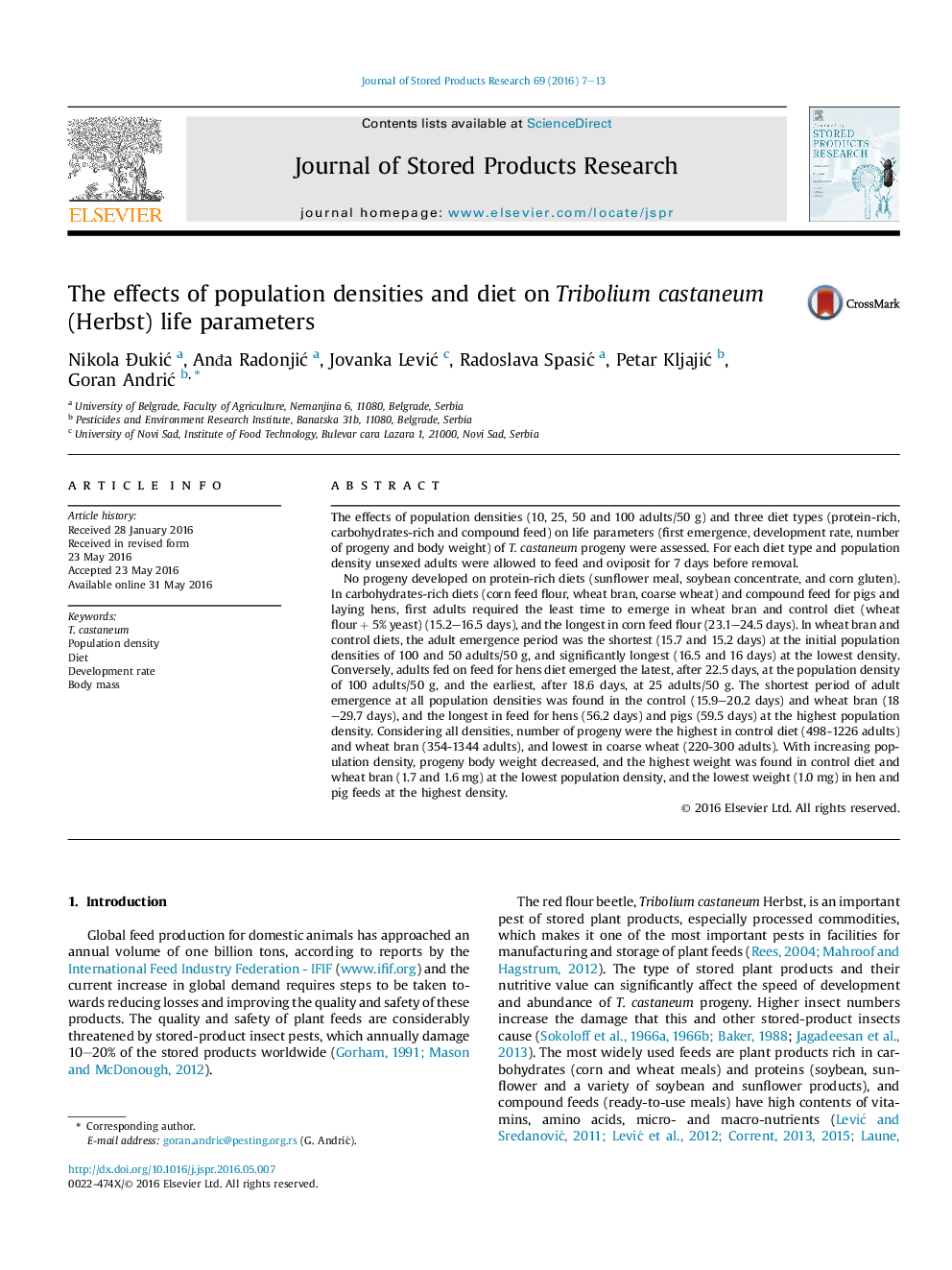| کد مقاله | کد نشریه | سال انتشار | مقاله انگلیسی | نسخه تمام متن |
|---|---|---|---|---|
| 6378286 | 1624920 | 2016 | 7 صفحه PDF | دانلود رایگان |

- Population density and diet had significant impact on the development rates, number and body weight of T. castaneum progeny.
- Increasing population density coincided with increasing development rate and decreasing body weight.
- No progeny developed in the diet based on high proteins.
- Maximum progeny production was found in the control and wheat bran, and minimum in the feed for laying hens.
- The investigated feed diets demonstrated different levels of susceptibility to T. castaneum infestation.
The effects of population densities (10, 25, 50 and 100 adults/50 g) and three diet types (protein-rich, carbohydrates-rich and compound feed) on life parameters (first emergence, development rate, number of progeny and body weight) of T. castaneum progeny were assessed. For each diet type and population density unsexed adults were allowed to feed and oviposit for 7 days before removal.No progeny developed on protein-rich diets (sunflower meal, soybean concentrate, and corn gluten). In carbohydrates-rich diets (corn feed flour, wheat bran, coarse wheat) and compound feed for pigs and laying hens, first adults required the least time to emerge in wheat bran and control diet (wheat flour + 5% yeast) (15.2-16.5 days), and the longest in corn feed flour (23.1-24.5 days). In wheat bran and control diets, the adult emergence period was the shortest (15.7 and 15.2 days) at the initial population densities of 100 and 50 adults/50 g, and significantly longest (16.5 and 16 days) at the lowest density. Conversely, adults fed on feed for hens diet emerged the latest, after 22.5 days, at the population density of 100 adults/50 g, and the earliest, after 18.6 days, at 25 adults/50 g. The shortest period of adult emergence at all population densities was found in the control (15.9-20.2 days) and wheat bran (18-29.7 days), and the longest in feed for hens (56.2 days) and pigs (59.5 days) at the highest population density. Considering all densities, number of progeny were the highest in control diet (498-1226 adults) and wheat bran (354-1344 adults), and lowest in coarse wheat (220-300 adults). With increasing population density, progeny body weight decreased, and the highest weight was found in control diet and wheat bran (1.7 and 1.6 mg) at the lowest population density, and the lowest weight (1.0 mg) in hen and pig feeds at the highest density.
Journal: Journal of Stored Products Research - Volume 69, October 2016, Pages 7-13